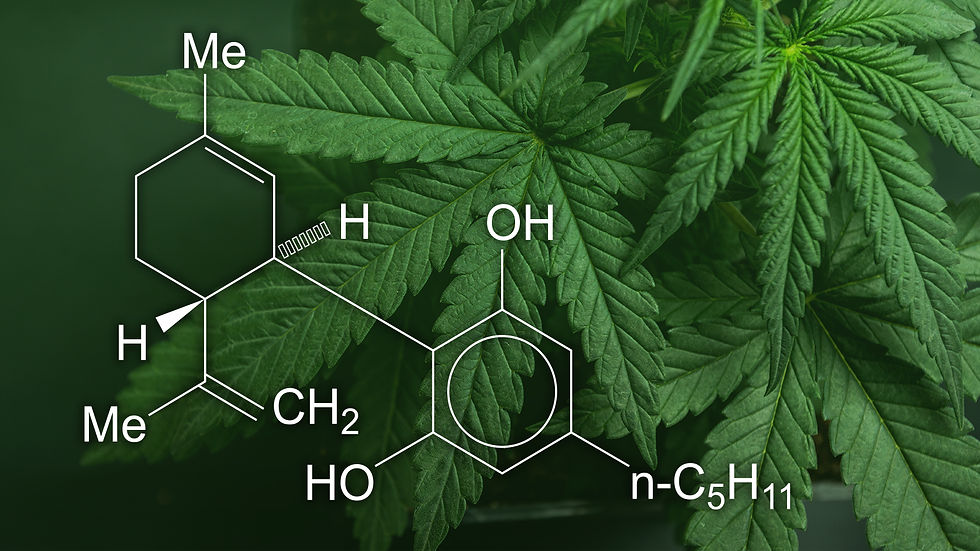🌿 Hemp: The Plant That Can Do Almost Everything
- TG

- 1 day ago
- 4 min read
When people talk about cannabis, the spotlight usually lands on THC — the part that gets you high. But there’s another side to this plant family that’s just as legendary: hemp.
For centuries, hemp has been the quiet workhorse of civilization — fueling ships, building homes, making clothes, and even shaping history. It’s strong, renewable, eco-friendly, and capable of replacing hundreds of materials we rely on today.
So let’s break down the truth about this misunderstood plant — and how it might just be the key to a greener future.
🧾 The Roots of American History — Written on Hemp
Yep, you read that right — America was literally founded on hemp.Both the Declaration of Independence and early drafts of the U.S. Constitution were written on hemp paper.
Back in the 1700s, hemp wasn’t just a crop — it was a requirement. In several American colonies, it was actually illegal not to grow hemp. Farmers in Virginia, Massachusetts, and Connecticut were required by law to cultivate it because of how vital it was for rope, sails, and paper. It powered the maritime industry and was considered essential for national prosperity.
That’s right — what’s now considered a “controlled substance” was once a patriotic duty.
Hemp was everywhere — woven into the fabric of daily life and the very foundation of America’s economy.
🚗 The Ford Model T: Powered by Plants
Fast-forward a century, and Henry Ford was carrying that same innovative spirit into the industrial age. In the 1940s, he built a prototype of the Model T made with hemp-based plastic panels that were lighter, tougher, and more flexible than steel.
Even better, the car was designed to run on hemp-based biofuel made from hemp seed oil.
Ford called it “a car grown from the soil.” His dream was to build a sustainable future where agriculture — not oil or mining — powered progress.
But by then, hemp had already been swept up in the anti-cannabis hysteria of the 1930s, and Ford’s green vision was crushed under industrial lobbying and prohibition.
Still, he proved a point: hemp could replace both the metal and the fuel that ran America.
🏗️ What Hemp Can Make: The List Keeps Growing
Hemp isn’t just a plant — it’s a sustainability powerhouse. Nearly every part of it can be transformed into something useful:
Fibers: Used for clothing, shoes, ropes, and canvas (fun fact: “canvas” literally comes from cannabis).
Hurds (inner stalk): Perfect for paper, insulation, and eco-friendly construction materials.
Seeds: Rich in protein, omega fats, and nutrients — used in food, oils, and skincare.
Oil: A source for biofuels, paints, and lubricants.
Hempcrete: A lightweight, carbon-negative alternative to concrete used in green architecture.
Plastics: Hemp can be turned into bioplastics that are stronger and biodegradable compared to petroleum-based plastics.
Today, hemp has over 25,000 known uses, from clothing to batteries — proving it’s not just a crop, it’s a revolution.
🌱 Eco-Friendly by Nature
What makes hemp truly special isn’t just what it can make, but how it grows.
It grows fast — ready to harvest in 3 to 4 months.
It needs no pesticides and minimal water.
It cleans the soil by removing toxins and replenishing nutrients.
It even absorbs more CO₂ per acre than trees.
That’s right — hemp doesn’t just exist sustainably; it actively helps heal the planet.
If we embraced hemp again the way early America did, we could drastically reduce pollution, deforestation, and plastic waste — while fueling a cleaner, greener economy.
💰 Why Hemp Was Banned (and Why It’s Coming Back)
So if hemp was once required by law to grow, how did it end up illegal?
In the 1930s, powerful industries started seeing hemp as a threat. The DuPont Company, which had just patented nylon, joined forces with William Randolph Hearst, who owned vast timber and paper holdings. Together, they lobbied hard to demonize hemp — portraying it as dangerous “marihuana” in their newspapers.
It wasn’t about drugs; it was about protecting profits. Hemp could make paper cheaper than trees and fabric stronger than nylon — and that was bad for business.
Their campaign led to the Marihuana Tax Act of 1937, effectively banning both hemp and cannabis. America went from requiring farmers to grow hemp to arresting them for it.
It took until the 2018 Farm Bill to undo that damage and bring hemp back — finally recognizing it as a legal, agricultural crop once again.
Now, hemp is reemerging as a super-crop of the modern era — one that’s renewable, versatile, and poised to lead the next wave of sustainable innovation.
🚀 The GAS Takeaway
At GAS, we’re not just about flavor — we’re about progress, quality, and roots. Hemp represents all of that: a connection to history, a symbol of resilience, and a vision for the future.
It’s wild to think that one plant could give us paper, fuel, food, fabric, and freedom — but that’s hemp. It’s more than a plant; it’s proof that sustainability has always been in our DNA.
So next time you crack open a GAS and take a sip, remember — cannabis doesn’t just elevate your mind. It builds the world around you. 🌿💨



Comments